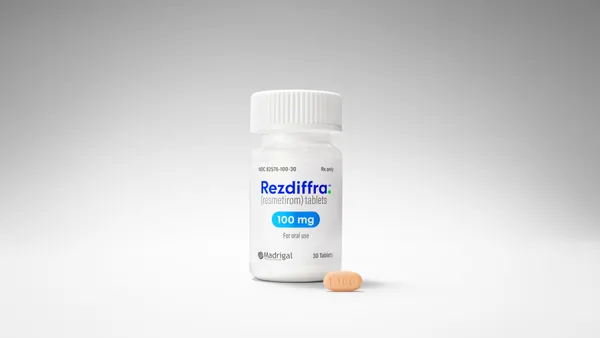18 September 2008 VIEW on Marketing BRAND POSITIONING It has already been nearly a decade since Malcolm Gladwell’s book, “The Tipping Point: How Little Things Can Make a Big Dif ference,” made such a huge impact on marketers. In his break through book, Gladwell devoted two chapters to explaining what he called “The Power of Context,” which included his now famous linking of New York City’s graffitieradication effort to a dramatic reduction of violent crime in the city. Gladwell’s premise is that our external environment shapes who we are and how we act. Now — nearly 10 years after the phenomenon known as “The Tipping Point”— pharmaceutical marketers can harness the power of context to reenergize mature brands. Postpone Brand Retirement Let’s frame our discussion of recontextualization within the context of something unavoidable: aging. Specifically, the aging of a certain segment of American society born between 1946 and the mid60s — the Baby Boomers. At the same time those boomers are dealing with decreased mobility and younger, faster colleagues, they are being asked to carry more than their fair share of weight around the workplace. Their experience, stability, and institutional knowledge make them invaluable assets to their organization and they are relied on by management as revenue producing workhorses and mentors to the next generation of leaders. Like aging baby boomers, mature pharmaceutical brands are facing Ever increasing performance pressures. And we do expect them to perform under pressure; after all, something has to generate the revenue to fund that next generation of new and novel compounds. But as we all know, the big payoffs from R&D pipelines often come years later than promised — if at all. In the meantime, the burden on our mature brands to keep performing only increases. Instead of offering them a comfortable retirement, we try to drive our fading power houses to produce more revenue quarter after quarter, only to see the trend lines flatten or head in the wrong direction. There is a way to ensure that these brands are heard above the din and remain relevant to prescribers. And that is to recontextualize. The Power of Context is Environmental Brand messages, even those that score off the charts in market research, don’t often have a shelf life proportionate to the investment it took to create them. This is because the context of those force ranked messages are almost entirely brand centric, and do not take into account the conditions and circumstances that occur around the potential use of the brand. We repeatedly make the mistake of overestimating the importance of attributes and underestimating the importance of the situation and context in which — if successful — our brand will live and breathe. For example, we can all remember when a diagnosis of HIV/AIDS was considered terminal. However, thanks to a number of breakthrough treatments introduced in the 1990s, HIV/AIDS went from being terminal to being a chronic disease patients could live with. As a result, today HIV/AIDS drugs are defined by shortterm issues like better tolerability and “patient friendliness.” At the same time the World Health Organization (WHO) has made a dire prediction that there will be a major spike in death rates due to HIV/AIDS beginning around 2010. Let’s look at two leading HIV/AIDS drugs, Brand A and Brand B. Brand A, with its better side effect profile, has overtaken the long standing market leader, Brand B. Brand B continues to lose share and relevance trying to compete in the context of “patientfriendly.” How ever, Brand B beat Brand A to the market by more than two years, enabling it to amass convincing clinical evidence on longterm survival. Brand B has a major advantage and an opportunity to recontextualize itself now to capitalize on what will become a major sea change in HIV/AIDS treatment; longterm survival will undoubtedly take precedence over tolerability. Brand B must undertake an effort to make “longterm treatment success” the context in which it places itself. Within that context Brand B can ensure its own longterm viability and potentially reclaim its market leadership position. The key to recontextualization is finding ways of obtaining new data from relevant stakeholder cohorts that illuminates their real world clinical atmosphere (as in the WHO data cited above) then create intersections between that context and your brand to imbue the brand with a renewed relevance. Creating thoses critical intersections is up to us as marketers. We are working in perhaps the most challenging period in pharmaceutical marketing history. By embracing recontextualization as the new cornerstone of pharmaceutical marketing, we can ensure that brand building remains a viable part of the marketing environment long into the future. Red Car Pharma Solutions RED CAR PHARMA SOLUTIONS, a division of The Hal Lewis Group, Inc., is a solutions based marketing initiative that creates and delivers measurable results for mature brands. For more information, visit redcarpharma.com. Recontextualization Maureen Mangiavas Sr. Director, Business Development Changing the context in which mature brands are marketed can bring them back into the customer’s consciousness. P H A R M A S O L U T I O N S A PeerGenerated “WrapAround” Program from The Hal Lewis Group, Inc. Where can Red Car ^TM take your brand? Reengage your customers by contextualizing your brand in a new way. Contact Maureen Mangiavas 215.832.0178 [email protected] to schedule a case based demonstration Visit www.redcarpharma.com Introducing Red Car^TM—a unique way to generate promotable new data without clinical trials. Just because your brand has reached “mid life” doesn’t mean it’s time to slow down. You can revitalize your proven, trusted brand messages with a shiny new exterior. Our peer generated data are designed to help you get their attention again. Tried everything and still getting tuned out?
An article from


Recontextualization
Filed Under:
Commercialization









